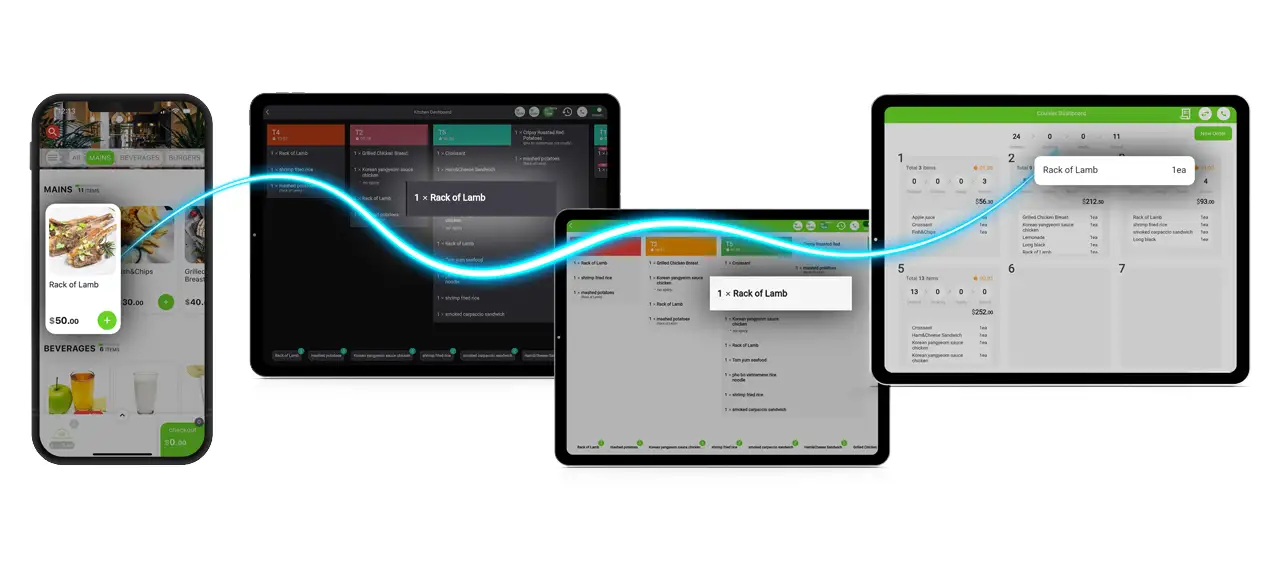Why QR code ordering?
QR code ordering originated as a solution to address the challenge of recruiting staff during the difficult times of the Covid era. However, transitioning to a QR code-based ordering method doesn't necessarily equate to a straightforward replacement of human workforce, as it has been found to be more intricate in its impact
So, what is the extent of effectiveness of QR code ordering?
The average time for order taking is around 30 seconds. Assuming there are 20 tables in the restaurant and an assumed turnover rate of 2 rounds, an average of 40 orders are placed per day. Simplistic calculations suggest that approximately 20 minutes per day are dedicated to order taking. But, this calculation is not straightforward. This is because the staff taking orders often also serve, clear tables, and handle payments. Thus, the time spent on order-taking affects all aspects of the time it takes for food to reach the customer, essentially impacting the entire dining experience.

The analogy of a highway can be helpful in understanding this.
With only one person taking orders, it's akin to having a single car lane for orders entering the system.
Orders are processed sequentially, like cars joining a highway one after the other.
The speed at which the orders move into the kitchen is determined by the kitchen's capacity, which is analogous to the number of lanes in a highway determined by the number of burners on a stove.
Similarly, if the same person serving is also taking orders, the lane that serves the food to customers is also a single lane.
In this case, if the person taking orders also needs to serve, the serving time will influence the order-taking time, and vice versa as well.
Because, in order to take new orders, it is necessary to briefly block the road for serving and open the pathway for orders coming in, as the serving road needs to be temporarily obstructed for the purpose of receiving orders.
Thus, the time taken for order taking is intertwined with the time for serving, as they both block the same lane intermittently.
The concept is similar to temporarily blocking a lane to allow cars to merge onto the highway.
Conversely, to serve orders, the lane for orders must be blocked momentarily, as you can't serve while new orders are being placed.
At this point, if the same person is handling all these tasks, they must block both lanes to clear tables as well.
Ultimately, the time spent on order taking extends into serving and table clearing time, directly impacting the customer experience.
If a traffic jam occurs in this ordering process highway, the time delay accumulates and gets passed on to the customers. When this time delay surpasses the threshold of a customer's patience, they leave with a disappointing experience regardless of the essence of the food's taste.
The problem can be likened to highway congestion, and this cumulative wait time is communicated to customers.
The solution lies in widening the lanes of the order, serving, cleaning, and payment processes.
Hiring more staff to widen these lanes carries the cost of increased labor expenses and the risk of varying operational efficiency based on the individual's capabilities.
If a traffic jam occurs in this ordering process highway, the time delay accumulates and gets passed on to the customers. However, BoB-Order addresses these issues in three ways.
However, BoB-Order addresses these issues in three ways.
- Firstly, it creates an infinite number of lanes for order taking through QR code-based customer-initiated orders, akin to hiring as many order-takers as there are customers.
- Secondly, it replaces paper dockets with an electronic system, eliminating the time spent on checking and managing paper orders. Think of it like the transition from manual passport checks to electronic passport checks at airports.
- Thirdly, when combined with the Mobile Payment feature offered by BoB-Order, the lane for payments is also infinitely expanded, preventing payment-related traffic jams.